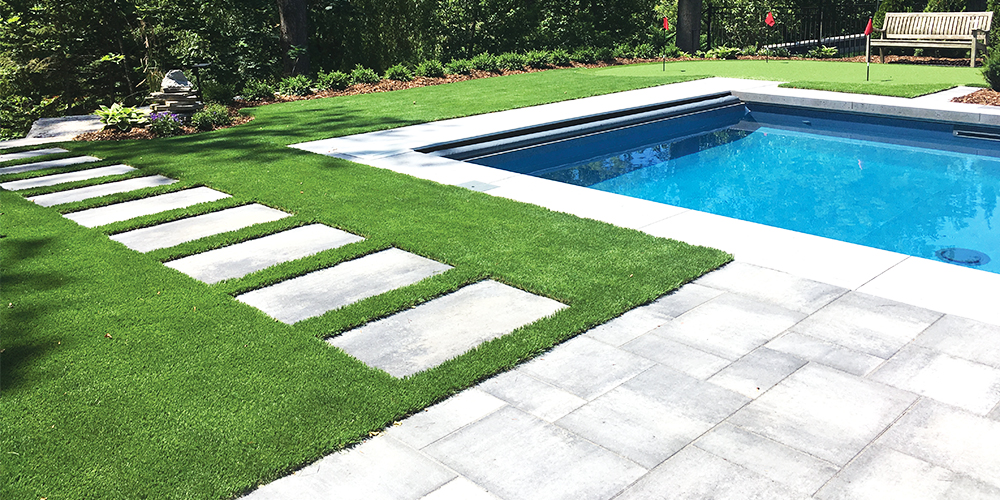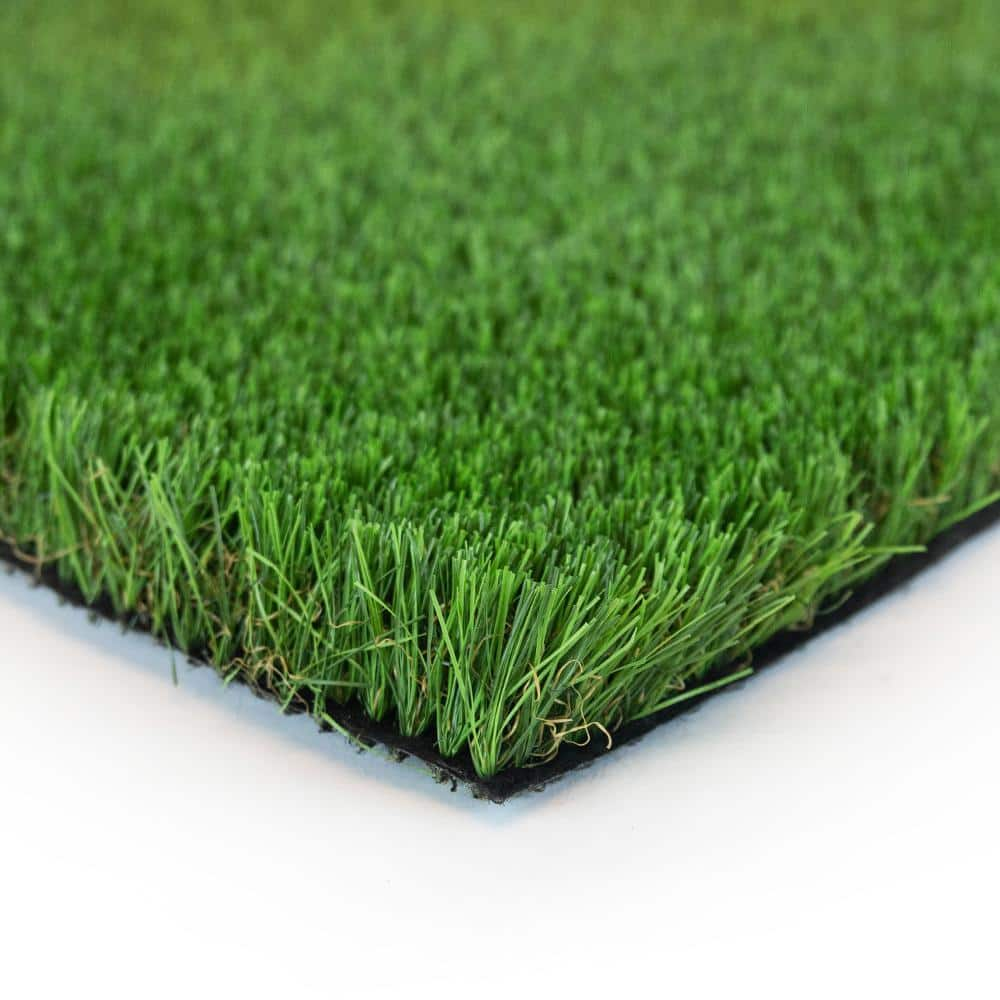Top Arizona Turf Providers Delivering a Lifelike Lawn Option
Top Arizona Turf Providers Delivering a Lifelike Lawn Option
Blog Article
Explore the Environmental Perks of Opting for Artificial Grass Solutions
The fostering of synthetic grass solutions presents a compelling opportunity to address pushing environmental challenges. By substantially reducing water usage and reducing the application of dangerous chemicals, these options not just advertise sustainable landscaping yet also protect local ecosystems. The reduced carbon footprint associated with lowered upkeep activities adds to a much more sustainable strategy to land monitoring. Nevertheless, the implications of these advantages extend beyond plain preservation efforts, questioning concerning their long-lasting influence on habitat conservation and overall eco-friendly balance. Checking out these measurements reveals an intricate interplay worth considering.
Water Conservation Perks
Among one of the most significant advantages of synthetic grass is its capability to preserve water. Conventional turf yards call for significant irrigation, particularly in areas vulnerable to dry spell or water restrictions. In contrast, synthetic grass does not need watering, dramatically reducing the total demand for water resources. This feature is particularly useful in deserts where water scarcity is a pressing concern.
By getting rid of the requirement for regular watering, synthetic grass adds to sustainable landscape techniques and helps mitigate the environmental influence of excessive water consumption. The preservation of water expands to the reduction of runoff, which can lead to dirt erosion and waterway contamination.
In addition, the setup of artificial turf enables towns and homeowners to allot water resources much more effectively, concentrating on necessary usages such as alcohol consumption water and farming. The change towards man-made lawn not just promotes liable water use yet additionally straightens with more comprehensive ecological objectives intended at preserving all-natural resources.
As communities increasingly focus on sustainability, the water preservation advantages of fabricated lawn present an engaging instance for its adoption in residential and business landscaping jobs.
Minimized Chemical Usage
The change to synthetic grass dramatically decreases the reliance on chemical therapies frequently utilized in all-natural yard upkeep. Typical grass management commonly includes the application of herbicides, chemicals, and fertilizers to promote development and control bugs. These chemicals can position dangers to human health and wellness, local wild animals, and the atmosphere, adding to dirt and water contamination.
In comparison, artificial turf removes the demand for these damaging substances. By decreasing the release of synthetic compounds right into the ecosystem, man-made lawn advertises much healthier soil and water systems.
Furthermore, the absence of chemical overflow related to man-made lawn installments aids secure neighborhood rivers from air pollution, sustaining aquatic life and preserving biodiversity. Arizona turf. As communities increasingly prioritize lasting methods, choosing man-made lawn presents a viable remedy that straightens with ecological preservation objectives. With this shift, residential property proprietors can take pleasure in lavish green rooms without endangering eco-friendly wellness, paving the means for a more sustainable future
Lower Carbon Footprint

In addition, the installation of synthetic grass can lead to considerable water preservation. All-natural grass call for considerable amounts of water for watering, which not only contributes to the carbon footprint connected with water removal and treatment however likewise stress regional water resources. On the other hand, synthetic grass needs marginal upkeep, requiring no watering, therefore considerably lowering water use and its associated power prices.
In addition, the durability of synthetic grass adds to its reduced carbon influence. With a life expectancy of approximately 15 years or more, the need for frequent substitutes is reduced, causing much less waste and reduced energy usage in production and getting rid of typical lawn alternatives. On the whole, fabricated lawn provides a sustainable alternative for environmentally mindful landscape design.
Environment Conservation
Environment conservation is an important factor to consider in the argument over landscaping selections, particularly when contrasting man-made lawn to natural turf. All-natural turf lawns typically need considerable upkeep, consisting of making use of plant foods, chemicals, and herbicides, which can adversely impact regional ecological communities. These chemicals can leach right into the dirt and rivers, harming indigenous plants and animals and interfering with neighborhood habitats.
On the other hand, synthetic turf offers a chance to lower the environmental footprint of landscaping. By choosing synthetic grass, house owners can decrease the disturbance of natural environments related to standard lawn care methods. Artificial turf removes the demand for harmful chemicals, therefore securing close-by wildlife and keeping the stability of bordering ecosystems. Additionally, the installment of synthetic grass can result in the conversion of previous turf locations right into more biodiverse landscapes, such as pollinator gardens or native plant areas, which can support regional wildlife.
Eventually, the shift to synthetic turf not just preserves water and decreases upkeep efforts but additionally promotes a more harmonious relationship between human activities and the all-natural atmosphere, promoting environment conservation while doing so.
Long-Term Sustainability
Long-lasting sustainability is a view website vital consider assessing the benefits of fabricated grass over standard grass lawns. One of one of the most significant benefits of synthetic grass is its toughness; it can last up to 15-20 years with minimal maintenance, whereas natural yard requires constant reseeding and substitute. This long life minimizes the need for continuous sources, such as water, plant foods, and chemicals, which are important for keeping a healthy yard lawn.
Additionally, synthetic grass adds to a decrease in carbon discharges connected with grass treatment devices. Standard lawns frequently need gas-powered mowers, trimmers, and blowers, every one of which add to air pollution. Turf installation phoenix az. On the other hand, synthetic grass eliminates the need for such devices, promoting a cleaner environment
In addition, the production of synthetic grass significantly uses recycled materials, improving its sustainability profile. As manufacturers embrace environment-friendly techniques, the ecological footprint of synthetic lawn continues to lessen.

Final Thought
The fostering of fabricated lawn solutions presents substantial ecological advantages, including substantial water conservation, reduced reliance on dangerous chemicals, and a reduced carbon impact. Furthermore, artificial grass help in preserving all-natural environments by reducing land disturbance and promoting lasting sustainability through making use of durable products. Collectively, these aspects highlight the possibility of synthetic grass to contribute favorably to ecological health and wellness and provide a feasible choice to traditional landscape design methods in a progressively resource-conscious world.
In comparison, fabricated grass does not need watering, significantly lowering the general demand for water sources. By lessening the release of artificial substances into the ecological community, synthetic turf advertises healthier dirt and water systems.
Moreover, the installation of Going Here man-made grass can result in significant water conservation. In comparison, synthetic turf requires marginal maintenance, calling for no watering, consequently significantly decreasing water usage and its linked energy prices.

Report this page